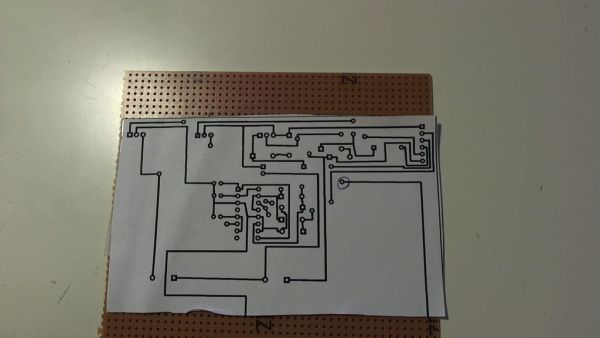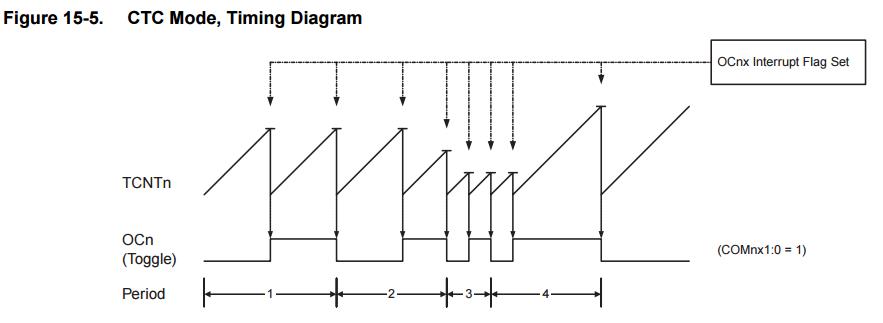

The PWM functions analogWrite() uses timers, as the tone() and the noTone() function does. Many Arduino functions uses timers, for example the time functions: delay(), millis() and micros() and delayMicroseconds(). As Arduino programmer you will have used timers and interrupts without knowledge, bcause all the low level hardware stuff is hidden by the Arduino API. This tutorial shows the use of timers and interrupts for Arduino boards.

ARDUINO PWM TIMER CODE

been configured with Fast PWM is wrong. Thus initializing OCR1A/OCR1B before TCCR1A and TCCR1B has register will be enabled, and its existing garbage value will register and the buffered OCR1A register contains some "random", a PWM mode the value is written to the non-buffered OCR1A If initializing OCR1A before configuring TCCR1A and TCCR1B to and Clear Timer on Compare (CTC) modes of operation, the twelve Pulse Width Modulation (PWM) modes. "The OCR1x Register is double buffered when using any of the configured with Fast PWM mode 14 is wrong. Thus initializing OCR1 before TCCR1A and TCCR1B has been value can be written to the ICR1 Register." Generation mode (WGM13:0) bits must be set before the TOP Generation mode that utilizes the ICR1 Register for defining "The ICR1 Register can only be written when using a Waveform IMPORTANT NOTE ABOUT ORDER OF INITIALIZATION: 16.11.2 TCCR1B – Timer/Counter1 Control Register B | (1 << COM1B1) | (0 << COM1B0) // Clear OC1B on Compare Match, set OC1B at BOTTOM (non-inverting mode) | (1 << COM1A1) | (0 << COM1A0) // Clear OC1A on Compare Match, set OC1A at BOTTOM (non-inverting mode) 16.11.1 TCCR1A – Timer/Counter1 Control Register A Works because OCR2A and OCR2B are initialized after TCCR2A and TCCR2A are configured. Your Timer 2 code TCCR2B = _BV(WGM22) | _BV(CS21) Your problem is the order of initialization of the registers. Here is relevant information from the datasheet: I've tried changing the board but I have the same result. I'm using an Arduino Nano breakout board for prototyping, with D9 and D10 being the timer1 output pins: This line causes both outputs to be held HIGH I'm not sure why that works.) void setup() (I just guessed and checked with OCR1A to get 25kHz. I tried changing everything (ICR1, OCR1A, TCCR1A), but the only combination that did anything different was the following, which gives a 25kHz frequency on D10, and D9 held HIGH, but the HIGH duration is stuck at 4μs regardless of the registers. Set GPIO for timer1 output for OC1A and OC1B I have tried the following as per Stephan's suggestion, however it just leads to both outputs (D9 and D10) being held HIGH: void setup() I have found this post: Secrets of Arduino PWM, however it only covers the use of timer2. I have been looking around for explanations outside the datasheet. To get the same result using timer1 must be incredibly simple, however I'm not familiar with these registers. Prescalar table for Timer2 (from datasheet section 17-9):Ġ 0 0 = No clock source (Timer/couter stopped) For this example, lets consider a 35% duty cycle: void setup()ġ6*10^6/ / () / 2 = Here is what I am using to generate a 25 kHz, variable duty cycle using timer2. I already have what I need using the 8-bit timer2, I am just concerned with using different timer instad of timer2, because timer2 is used in various libraries, and I'd like to have more granularity. On the Atmel ATmega328P ( datasheet), there are three timers available for PWM generation (timer0, timer1, and timer2).


 0 kommentar(er)
0 kommentar(er)
